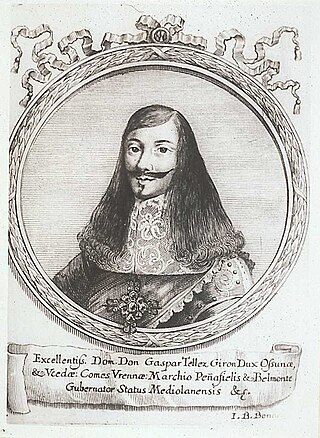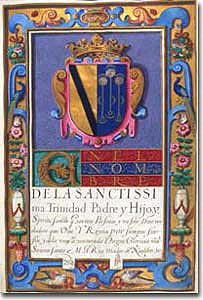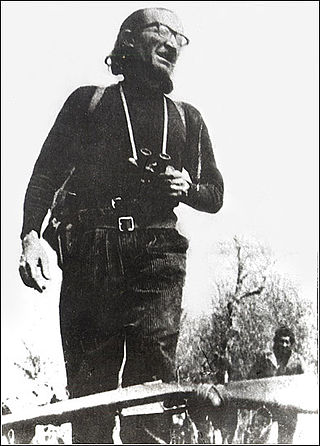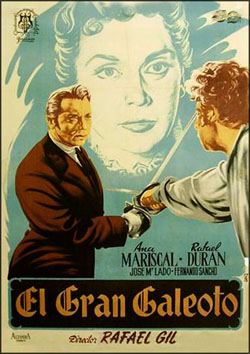Related Research Articles

Francisco Gómez de Sandoval y Rojas, 1st Duke of Lerma, 5th Marquess of Denia, 1st Count of Ampudia, was a favourite of Philip III of Spain, the first of the validos through whom the later Habsburg monarchs ruled. His administration was marked by costly wars, including the Twelve Years' Truce with the Dutch Republic, financial mismanagement, and the controversial expulsion of the Moriscos. Eventually, he was deposed in 1618 under a palace intrigue orchestrated by his son and political rival, Cristóbal de Sandoval. Lerma retired as a cardinal and was succeeded by the Count-Duke of Olivares but faced financial penalties and died in 1625 at Valladolid.

Gaspar Téllez-Girón, 5th Duke de Osuna, 5th Marquess of Peñafiel, 9th Count of Ureña and other lesser titles, was a Spanish general and a Grandee of Spain.
Villanueva de la Sierra is a municipality located in the province of Cáceres, Extremadura, Spain. According to the 2005 census (INE), the municipality has a population of 577 inhabitants.
Rabbi Samuel ben Isaac de Uçeda was a Jewish commentator and preacher. Born at Safed in the first quarter of the sixteenth century, his name, Uçeda, originally was derived from the town Uceda in the archbishopric of Toledo. He was a pupil of Isaac Luria and Hayyim Vital, with whom he studied kabbalah, and became rabbi and preacher in Safed and, later, in Constantinople.

The Palace of the Councils or Palace of the Duke of Uceda is a building from the 17th century located in central Madrid, Spain. It is located on the Calle Mayor, corner of calle Bailén Street.

Cristóbal Gómez de Sandoval-Rojas y de la Cerda, known as the Duque de Uceda, but also titled second marquis of Cea, fifth marquis of Denia, and knight of the order of Santiago was the official minister of state, also known as the valido or valued one, for King Philip III of Spain. He engineered the exile of his father the Duke of Lerma, from the court, and his own succession to the position.

Duke of Uceda is a hereditary title in the Peerage of Spain, accompanied by the dignity of Grandee and granted in 1610 by Philip III to Cristóbal Gómez de Sandoval, who succeeded his father Francisco Gómez de Sandoval, 1st Duke of Lerma as the king's favourite.

Juan de Uceda was a Spanish painter. Formerly a student of Alonso Vázquez, he is known for his religious work. Some of his paintings can be seen today in the Museum of Fine Arts of Seville.

Pedro Afán de Ribera, 1st Duke of Alcalá de los Gazules, Virrey y Capitán General de Cataluña y Nápoles, also known as Pedro Enriquez Afan de Ribera or Per Afán de Ribera y Portocarrero or Perafán de Ribera y Portocarrero, was a Spanish nobleman most notable for his twelve-year-long service as Viceroy of Naples, Viceroy of Catalonia and 1st Duke of Alcalá de los Gazules.

Juan Francisco Pacheco y Téllez-Girón, 4th Consort Duke of Uceda,, was a Spanish noble, viceroy of Sicily and Spanish Ambassador in Rome.
Diego Pacheco Téllez-Girón Gómez de Sandoval, also called Diego Fernández de Velasco y Pacheco or Diego Pacheco Telles Giron Fernandez de Velasco y Enrique, was a Spanish noble and politician, who supported the French during the Peninsular War, and who was therefore known as an Afrancesado.
Ricardo Uceda Pérez is a Peruvian journalist notable for his award-winning coverage of military and government corruption.
Don Quijote cabalga de nuevo is a 1973 Spanish-Mexican comedy film directed by Roberto Gavaldón, loosely based on Miguel de Cervantes's novel Don Quixote and starring Cantinflas as Sancho Panza, Fernando Fernán Gómez as Don Quixote, and María Fernanda D'Ocón as Dulcinea.

Luis de la Puente Uceda was a Peruvian activist, politician, land reformer, and guerrilla who protested against the political coexistence and coalition between his party, American Popular Revolutionary Alliance (APRA), and the conservative forces who supported the second government of Manuel Prado Ugarteche (1956-1962), and helped pioneer land reform in Peru.
Juan Tellez-Girón y Enriquez de Ribera, 4th Duke of Osuna was Viceroy of Sicily from 1655 to 1656. He was the only male descendant of Pedro Téllez-Girón, 3rd Duke of Osuna who was born in December 1579, and was Viceroy of Sicily from 1610 to 1615 and Viceroy of Naples from 1615 to 1620. His mother was Catalina Enriquez de Ribera y Cortés who died in November 1635 and was one of 3 daughters of Fernando Enriquez, 2nd Duke of Alcalá de los Gazules.
Fernando García de Hita was a Castilian nobleman, traditionally considered the founder of the noble House of Castro. He governed the lordships of Hita and Guadalajara, and frequently attended the royal court under King Alfonso VI and Queen Urraca.

The Palacio del Duque de Uceda also known as Palacio de los Duques de Medinaceli was a palace located in Plaza de Colón in Madrid.

Miguel Herrero Uceda is a writer, lecturer and natural scientist committed to the defence of the environment and the conservation of popular traditional culture. He has a PhD in artificial intelligence and was a professor at Universidad Complutense of Madrid. He is a promoter of the natural philosophy "arbotherapy", a therapy to combat the stress and the anxiety generated by modern world.

The Great Galeoto is a 1951 Spanish drama film directed by Rafael Gil and starring Ana Mariscal and Rafael Durán.

Pedro Tenorio, sometimes called Pedro Díaz de Tenorio, was the bishop of Coimbra from 1371 to 1377 and archbishop of Toledo from 1377 until his death. Pedro was educated in exile in France and Italy. He fought in the Castilian Civil War in 1367 and obtained a doctorate in canon law in 1368. In the Western Schism, he argued the conciliarist position. He played a leading role in the regency of Henry III in 1391–1393. He is remembered primarily as an administrator and builder whose legacy is bridges, towns, churches, hospitals and castles. According to the Diccionario biográfico español, he was "one of the great archbishops of Toledo".
References
- ↑ "Artist History including Pedro de Uceda (Russian)" . Retrieved 29 October 2013.